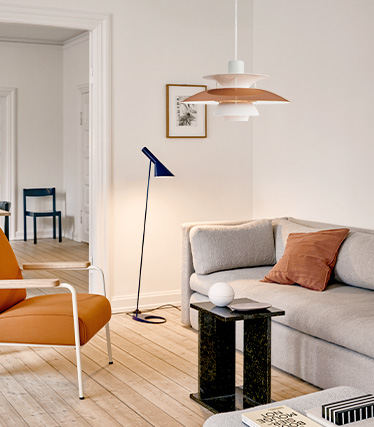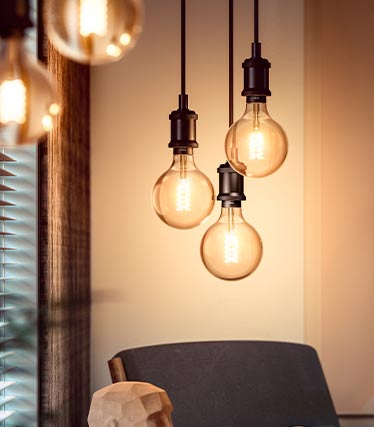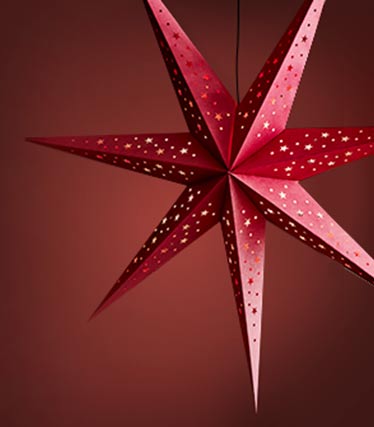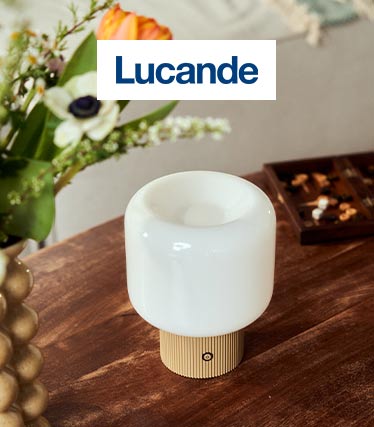)
IP protection ratings
Meaning and overviewThe IP protection code provides information about the protection against foreign bodies and the protection against the ingress of water with harmful effects. The term IP protection code is usually also referred to as IP protection class. However, the protection class refers to a completely different product property.
Luminaires according to IP protection classes
Important note: Please note that different IP codes are prescribed in the bathroom depending on the protected area and in different parts of the outdoor area and must be complied with.
IP codes Meaning
)
)
To ensure that an outdoor light works reliably in all weathers, it has a water-protected housing.
The IP code (English for International, sometimes referred to as Ingress Protection) provides information on how the product is protected against the ingress of foreign bodies and moisture.
Difference between IP code (IP) and protection class: The IP code (IP) describes how well a device is protected against foreign bodies and moisture. The protection class (I, II, III) describes the level of protection against electric shock.
IP protection class table
How to read the IP code: The IP code is made up of 2 digits. The first digit shows the protection against accidental contact with dangerous parts and the protection of the equipment against foreign bodies. The second digit indicates the protection against moisture. The higher the number, the greater the protection. As a rule, lights have IP codes from IP20 to IP68.
| 1. Code number against penetration of foreign bodies | 2. Code number against ingress of water with harmful effects | |
|---|---|---|
| 0 | not protected | not protected |
| 1 | Protected against solid foreign bodies ≥ 50 mm | Protected against vertical dripping |
| 2 | Protected against solid foreign bodies ≥ 12.5 mm | Protected against dripping water at an angle (15° inclination) |
| 3 | Protected against solid foreign bodies ≥ 2.5 mm | Protected against water spray |
| 4 | Protected against solid foreign bodies ≥ 1 mm | Protected against splash water |
| 5 | Dust-protected | Protected against water jets |
| 6 | Dustproof | Protected against strong water jets |
| 7 | - | Protected against temporary submersion |
| 8 | - | Protected against temporary submersion |
| 9 | - | Protected against high pressure and high jet water temperature |
It is often assumed that IP44 is waterproof. That is not correct. A light is only waterproof if it is protected against temporary or permanent immersion. This only applies to IP67 and IP68.
Splash-proof (IPX4) means that a light offers protection from rain. IP code IPX5 is required for a light to withstand heavy rain, which is defined as water jets.
The most common IP codes
)
Protection against foreign bodies > 1 mm and splash water on all sides offers resistance to rain. Furthermore, no insects can penetrate. Frequently used with lights for house walls and - depending on the installation location - also in damp rooms.
)
Protection against splash water and better dust protection for use in the hobby room, workshop or garage. They should not be placed unprotected in the garden or embedded in the ground, as they run the risk of being submerged in water.
)
Dustproof housing and water jet protection against heavy rain. This means that the light can also be installed free-standing, i.e. without a canopy. If there is a risk of the product being temporarily submerged in water, at least IP67 is required.
IP codes in the living area, bathroom and outdoor area
Moisture is not to be expected in dry rooms, for example in the living room. Lights with IP20 can therefore be used here. In addition to outdoor areas, however, it is mainly wet rooms such as the bathroom that require increased IP protection.
IP protection types in the bathroom
Moisture and splashing water are to be expected in the bathroom. Therefore, according to DIN VDE 0100-701:2008-10, at least IP44, IP65 or IP67 is required, depending on the installation location.
The bathroom is divided into three protected areas:
:format(jpeg))
Lights must be splash-proof up to 60 cm around the bathtub or shower and up to a height of 2.25 metres.
Up to a height of 2.25 metres around the shower head and bath/shower tray, the lights must be protected against water jets and may only be operated with safety extra-low voltage up to 12 volts.
In the bathtub and shower area, the lights must be waterproof in the event of temporary immersion and may only be operated with protective extra-low voltage up to 12 volts.
Caution: The power source and the transformer for 12-volt systems must be located outside these three areas.
IP protection types in the kitchen
)
)
In the living area, IP20 lights are perfectly adequate for the kitchen. The only exception may be under-cabinet lights near the sink, for example. IP code IP44 is recommended here. Only in commercial areas is a different IP code often required.
IP protection types in basements and damp rooms
)
)
Particularly in laundry basements and garages, there can be high levels of humidity that can potentially penetrate a light and cause damage. Lights with IP44 are therefore recommended for these areas.
IP protection types in the garden with pond
:format(jpeg))
The outdoor area is subject to all kinds of weather conditions. However, not every light is equally exposed to all weather conditions. The installation location determines the correct IP code.
*This information is for guidance only. The more protected an area is, the lower the IP code may be. Examples include covered outdoor wall lights with IP23. If in doubt, please always ask our technical advice and have the installation carried out by an electrician.
)
Protected by the architecture, rain is not to be expected here. IP23 is therefore sufficient for wall lights as well as recessed lights directly below the roof.
)
Here it is likely that the light will come into contact with rain. This is why splash-proof lights with IP44 are necessary.
)
Freestanding path lights are permanently exposed to all weathers. Only IP65 offers sufficient protection against water jets in heavy rain. If there is a risk of them being temporarily submerged in water, IP65 is not sufficient.
)
Lights with IP67 are required near the pond. This also applies to recessed floor lights, which can be submerged in water when it rains. Underwater lights require IP68 and are only waterproof up to a certain maximum depth. In most cases, drainage is also necessary.
IP protection types in entrance area and driveway
)
)
Lights close to the ground run the risk of being submerged, at least briefly, in heavy rain. Waterproof lights with at least IP67 are therefore required. This IP code means that the lights can withstand temporary immersion for up to 30 minutes. Drainage should also be planned in these areas.
IP codes for special applications
Important note: For each installation of lights, consult an expert electrician who will carefully consider the required IP code for the specific application and install the lighting as specified.
)
IP20 is usually sufficient for LED strips in dry indoor areas. In the bathroom, the level of IP code depends on the respective protection area in which the LED strip is used. Depending on the installation, up to IP67/IP68 may also be required outdoors.
)
The pool places very special demands on the lights. As lights in the pool are permanently submerged in water, IP68 is required in any case to ensure that they are waterproof when permanently submerged. The maximum depth of the light must also be observed.
)
In a workshop, there may be an increased dust load on the lights. Lights with IP6X are dustproof. Depending on the possible degree of moisture, the light should also be provided with a correspondingly high level of moisture protection. Sometimes a certain degree of impact protection (IK) is also of interest, especially when used above workbenches.
:format(jpeg))
In addition to high humidity, splashing water and water vapour, the sauna also has a high temperature. This requires special lights that are approved for high ambient temperatures in saunas. As far as the IP code in saunas is concerned, they often have IP68. However, normal IP-protected lights are not sufficient for saunas.



































































:format(jpeg))
:format(jpeg))
:format(jpeg))
:format(jpeg))
:format(jpeg))
:format(jpeg))
:format(jpeg))
:format(jpeg))
:format(jpeg))
:format(jpeg))
:format(jpeg))
:format(jpeg))